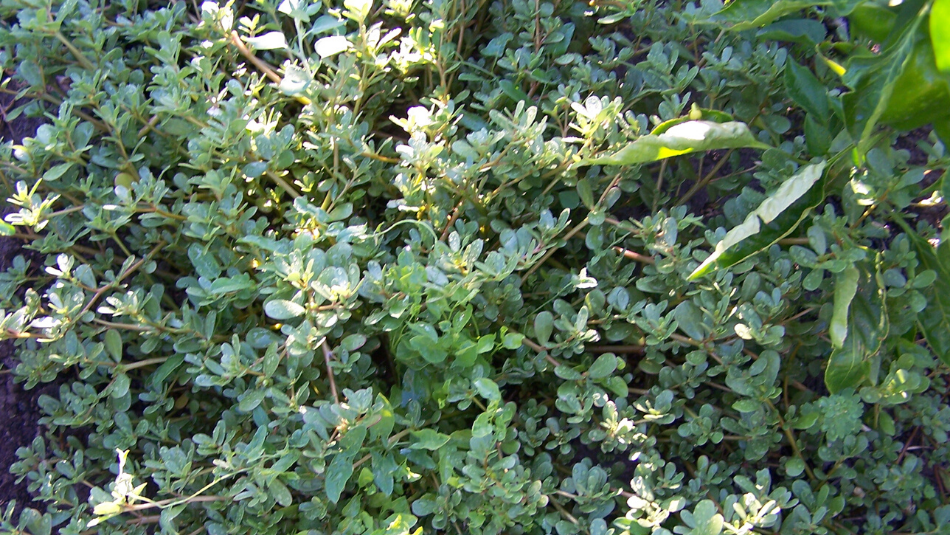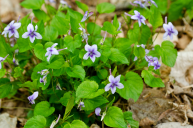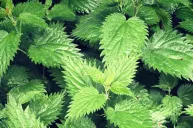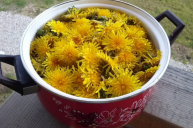Pesky weeds and wild plants may not be everyone's favorite thing. They're almost impossible to get rid of and they easily take over the yard. When planting a garden, a great deal of time and money goes into making plants grow, and the weeds, well those have to go. But wait, hold on! Did you know that many of those wild weeds are also edible? Edible weeds are particularly abundant in North America, so start looking.
With spring time in full swing, the foraging season has begun. If you're a newbie to foraging, don't worry, you don't have to go far. There's probably a handful of wild edible weeds popping up in your own backyard right now. Although you probably won't find these common edible weeds in the grocery store, that doesn't mean they should get tossed.
Embrace the wild and eat your garden weeds. While some foraged weeds can be an acquired taste, you may be surprised at how tasty the edible plants in your backyard really are. They also have a surprising amount of nutritional and health benefits, and the best part is that these edible wild plants are totally free!
There are so many ways to use edible weeds: Eat them raw, toss them in salads, saute them or mix them into a bright, tasty pesto.
While backyard weeds will vary due to region, these are eight of the most common weeds you'll find flourishing in your yard this spring.
1. Dandelion
https://www.instagram.com/p/BTp5rhSlvNC/?tagged=dandelions
Dandelions may ruin a lawn, but they certainly don't ruin your stomach. Possibly the most recognized weed in the yard, dandelions are an abundant weed simply waiting to be foraged. They're also abundant in nutrition. They're a good source of vitamin C, vitamin K, and even potassium and calcium. Rather than spending your time using harmful weed killers, embrace the dandelions and eat them up. From flower heads to the root, every part of the dandelion is edible!
When foraging dandelion greens, the bigger the dandelion leaves, the more bitter the flavor. If you prefer dandelions milder, pick young leaves and cook them in a soup. Cooking the leaves will help mellow out the flavor. If you prefer the bitter taste, then choose the bigger leaves and toss them in a salad. Oh, and if you're a fan of fried squash blossoms, why not dip the flower heads in some batter and fry those suckers up!
2. Clover
How many times have you spotted clover and thought if you looked hard enough you would find one with four leaves? Clover is a common weed we encounter almost every day. While you may be searching for the lucky clover, those three leafed ones are more than luck, they're edible.
Small amounts of raw clover leaves can add a kick to a salad or be used in a dish like you would fresh herbs. The blooms of white and red clover can also be eaten. Raw, cooked, or made into a tea, clover is a versatile ingredient.
3. Wood Sorrel
What you think may be a clover may actually be wood sorrel. It has a similar three leaf structure, but wood sorrel leaves are more heart-shaped as opposed to rounded. When foraging wood sorrel, take note of the leaf structure. If you accidentally wind up with clover, however, don't worry because both are edible weeds.
Wood sorrel, part of the oxalis family of plants, is a common weed throughout North America. It's high in vitamin C and has a pleasant lemony flavor. If you've had sheep sorrel before, it's flavor profile can be compared to that.
You can munch on the leaves raw or add them to a salad to add a hint of lemon. They also pair well with seafood and wild game. When preparing wood sorrel, pick off the flowers, leaves, and seed pods. All of these can be eaten, but young shoots are better and tough stems should be discarded.
4. Purslane
If you find purslane growing in the sidewalk cracks, don't toss it in the yard waste pile! Purslane, also known as Portulaca oleracea, is high in Omega-3 fatty acids. Fatty acids are important for a healthy heart and nervous system, so tossing out purslane would be like tossing out a bottle of fish oil supplements. In Chinese medicine, purslane was used to heal inflammation and treat gastrointestinal issues such as diarrhea. So in a pinch, you might be happy you kept it around.
Purslane is slightly sour with a lemony taste. When munching on it, know that it is a succulent so the leaves are crisp. Cook it, eat it raw or pickle it if you like. While it tends to grow abundantly in the cracks of the sidewalk, urban sidewalks are not the cleanest place. When foraging this edible weed, stick to your backyard instead.
5. Lamb's Quarters
In a pristine landscape, you might find lamb's quarters to be invasive. Also known as goosefoot and pigweed, it can crowd other plants in the garden. While you may not be fond of the looks, lamb's quarters is totally edible. In fact, it's not only edible, it's also healthy!
Lamb's quarters is a good source of several vitamins and minerals. One serving has more than the recommended dose of vitamin A and K, and has significant amounts of magnesium and calcium. In comparison to other leafy greens, lamb's quarters is a cross between spinach and swiss chard - so it makes for an excellent salad green. Try it in a spring salad or sauté it with some onions for a wild treat.
6. Plantain
Not to be confused with the delicious cooking banana, plantains are a highly common, healthy edible weed that's probably flourishing in your backyard. Native to Europe, plantain was brought to North America by European settlers. Since then, this invasive species is practically everywhere.
Commonly known as a broadleaf plantain, plantains have been used medicinally to cure colds and flu. It contains anti-bacterial properties that reduce inflammation and soothe a sore throat. Its nutritional benefits are similar to that of the dandelion, so health-wise they're a good weed to have on hand.
The flavor is slightly nutty and can be compared to that of asparagus. You can pan-fry the broadleaf shoots in a bit of olive oil - just as you would asparagus - and enjoy them all by their lonesome. It's recommended, however, to eat the smaller leaves. The bigger, older leaves tend to be more fibrous and bitter in taste.
7. Stinging Nettles
The first time I ate nettles, I was skeptical. The name doesn't necessarily imply good eats. What's rather surprising is their green taste. Once cooked, they become soft and highly edible. They taste similar to spinach and other greens cooked down from root vegetables.
Stinging nettles are a rather common weed. In fact, you've probably passed by these green guys and may have identified them as just 'another common pesky weed.' While they do have their name for a reason, you'll be fine picking them with a pair of gloves. Loaded with tons of minerals as well as protein, stinging nettles are a backyard delight you shouldn't pluck and toss.
8. Chickweed
If you like bean sprouts, but you don't have any in your refrigerator, try looking for chickweed in your yard. Chickweed, also known as Stellaria media, is a cool weather plant with edible flowers, stems and leaves found in lawns during the early spring and fall. Look for bright green leaves about a quarter of an inch to just over an inch long, and tiny white flowers with five double-lobed white petals. Just be careful not to pick any from yard where pesticide has been used.
With a mild flavor, you can use chickweed in salads and sandwiches. You can also swap this edible weed in for other cooked greens like spinach.
While caution should always be taken when foraging, it's a fun activity to engage in. Get to know your plants, become a forager and have a tasty weed-filled spring!
This article was originally published on March 19, 2019.




